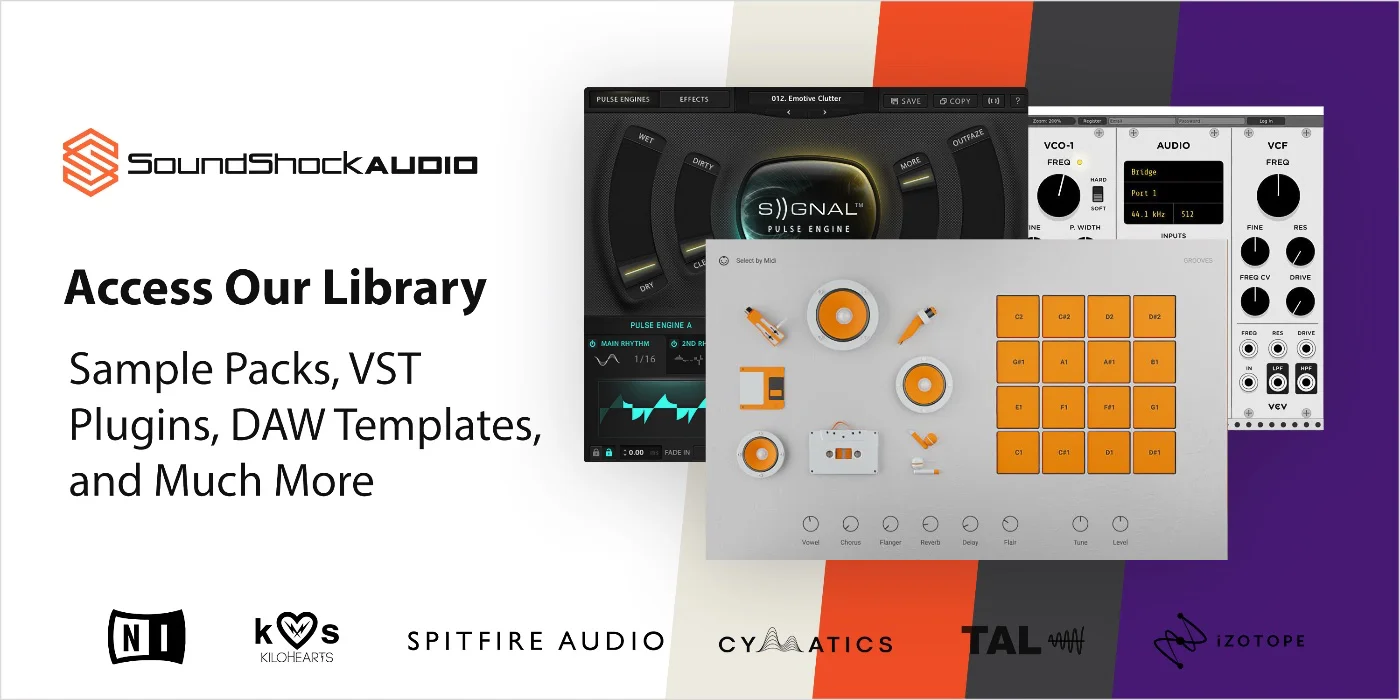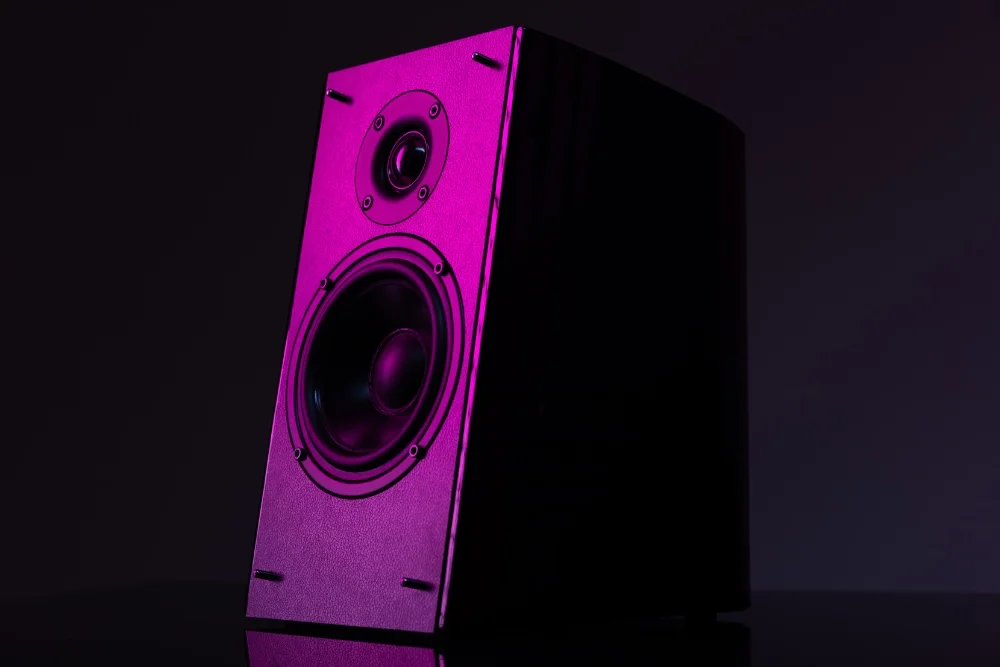Hey there fellow audio mixing engineers, are you looking for the ultimate guide on how to EQ sub bass for maximum impact? You’ve come to the right place! We all know that when it comes to professional-sounding mixes and recordings, getting your low end just right is a must. And in this article, we’re here to show you precisely how to do so. Whether you’re an experienced engineer or a beginner who’s just starting out, by reading this guide you’ll be able to achieve a powerful sub bass sound every time. So let’s jump straight in and dive deep into our ultimate guide on how to get those subs sounding loud and clear!
Understanding Eq
When it comes to sound manipulation, EQ is one of the most powerful tools a mixing engineer has. In fact, over 88% of professionals use EQ for bass sculpting in order to achieve maximum impact. Knowing the fundamentals of equalization and understanding frequencies are crucial elements when mastering this skill. Below we will explore some important equalization techniques that can help you shape your sub-bass sounds with precision and finesse.
By learning how to identify different frequency ranges and their effects on various instruments, you’ll be able to make informed decisions about which ones to boost or cut – allowing you to craft a desired sonic landscape with clarity and confidence. With these fundamental skills under your belt, let’s move onto exploring the frequency range of sub bass…
Frequency Range Of Sub Bass
When it comes to the sub bass frequency range, there’s a lot to consider. Sub-bass frequencies generally fall in the low-frequency range of 20Hz and below. While this range is important for creating an impactful sound, it should be kept within reason so as not to overpower other elements in the mix. It’s also important to note that when setting up your sub-bass range, you’ll want to avoid any frequencies that may conflict with one another. This can lead to a muddy sound where everything blends together instead of standing out on its own.
Once you’ve established what frequencies are suitable for sub-bass in your track, it’s time to move onto setting thresholds and ratios. Here we’ll look at how much signal will come through once those specific frequencies are engaged, allowing you to achieve maximum impact from your sub-bass.
Setting Thresholds And Ratios
Interesting statistic: according to a study conducted by Sound On Sound magazine, over 50% of professional mix engineers use dynamic compression when EQ’ing sub bass.
When setting thresholds and ratios for attenuating the sub frequencies, it’s important to remember that each track has its own unique needs. Ratios determine how much gain reduction is applied once the signal exceeds the threshold. A higher ratio will result in more attenuation which can help create a more consistent sound through dynamic compression. On the other hand, if you’re aiming for a less compressed sound with more natural transients then lower ratios are recommended.
It’s also important to consider attack and release times when working with dynamic compression as these settings determine how quickly or slowly your compressor reacts to the incoming signal. Too slow and it may not be able to keep up with fast-moving signals; too fast and it might start affecting other elements of your mix. Finding the right balance between attack and release can take some experimentation but when done correctly can make all the difference in achieving an optimal sub bass sound. With this groundwork laid out, we now move on to discuss low-pass filtering techniques which further shape our tone.
Low-Pass Filtering Techniques
Now that we’ve set the thresholds and ratios for our sub-bass frequencies, it’s time to move on to low-pass filtering. Low-pass filtering is an essential tool for shaping the frequency response of a track by reducing high end clarity and presence. To achieve this, we need to find a balance between setting the filter point at too high or too low of a cut-off frequency.
When working with sub bass frequencies in particular, you want to be careful not to reduce the punchiness of your sound by setting your filter too high. We recommend starting around 100 Hz and then adjusting from there until you get the desired amount of clarity without sacrificing any power. Experimenting with different levels can help you attain just the right mix between impactful lows and pleasant highs.
High-Pass Filtering Techniques
High-pass filtering is an essential part of shaping sub bass for maximum impact. Applying a high-pass filter to the low end of your mix can help to minimize muddiness and make room for other elements in the mix. Here are some important tips when using high-pass filters:
- Set the frequency cutoff carefully – Too much high-passing will result in thin, dull sounding mixes. Start with a relatively conservative cutoff point before slowly increasing it until you achieve the desired effect.
- Choose a suitable filter slope – The steeper the filter slope, the more abrupt the transition from one frequency range to another. Higher slopes offer better control over unwanted frequencies while also providing smoother transitions between audio ranges.
- Utilize sidechain compression – Sidechain compression allows you to compress specific frequencies in order to make them less audible or even completely silent at certain moments in time. This technique can be used to reduce overall noise levels as well as create dynamic effects like pumping kick drums and groovy accents on percussion sounds.
- Experiment with low cut filters – In addition to traditional high-pass filters, modern software provides additional tools such as low cut filters that allow you to shape your sound by removing unnecessary lows from specific tracks or entire channels within your mix.
- Don’t forget about gain staging – Gain staging involves adjusting each track’s level so that all parts of your song remain balanced and no single element dominates the rest of your mix. Pay close attention to how each track interacts with others throughout the entire mixing process in order to ensure that everything works together cohesively without any unexpected surprises when mastering.
Gain staging strategies require careful consideration during mixing so let’s move onto discussing those next!
Gain Staging Strategies
Gain staging is an essential part of sound editing. It involves setting the levels and adjusting the volume control to get a desired result from your mix. This can be achieved by having precise gain-staging strategies in place, as they have a big impact on how you mix for maximum impact.
| Technique | Description | Benefit |
|---|---|---|
| Low Cut Filter | Applies a low pass filter at specific frequencies to reduce low frequency content that may muddy up the mix. | Reduces excessive bass frequencies providing clarity and definition within the overall mix. |
| High Pass Filter | Uses high pass filtering techniques to remove unwanted lower frequencies and add clarity to the track. | Enhances treble and mid content while allowing space for other elements within the mix. |
| Compression/Limiting | Adjusts dynamics with compression or limiting settings so all sounds remain balanced throughout different sections of audio material. | Prevents clipping and helps maintain consistent level adjustments across multiple tracks when mixing for maximum impact. |
When it comes to mastering, understanding these key gain-staging strategies will help ensure your mixes are well balanced, clear, and powerful. Level adjustment plays an important role in creating tracks that stand out from others; careful consideration should always be given to each element’s contribution before going any further into mixing for maximum impact. The next step is learning various methods of equalization which provide even more options when crafting professional sounding music productions!
Mixing For Maximum Impact
When it comes to mixing sub-bass for maximum impact, eq-techniques are key. It’s essential to know how to balance the low and high frequencies so that the sub-bass will cut through the mix without being too boomy or muddy. You want to ensure there isn’t any clashing of frequencies between your bass line and other instruments in the mix because this can cause problems with clarity and dynamic range.
Start by carving out a clear space for your sub-bass with an EQ technique called High Pass Filtering. This involves reducing the low frequency content below a certain point – typically around 30Hz – so that only higher frequencies pass through. Doing this creates room in the mix for your sub-bass elements while also improving clarity across all parts of the track.
Next, you’ll need to tweak the mid-range and top end of your sub-bass sound using parametric equalization techniques such as boosting at specific frequency points like 250 Hz or 500 Hz, depending on what kind of tone you’re trying to achieve. Again, make sure not to boost too much as this may cause masking issues with other sounds in the mix. Finally, use compression and limiting techniques to control dynamics and shape up your sound until it fits perfectly into place within your overall mix picture!
Frequently Asked Questions
What Is The Best Eq Setting For A Particular Genre Of Music?
As an audio mixing engineer, I’m often asked what the best EQ settings are for a particular genre of music. It’s difficult to give one definitive answer as different genres use various techniques. When it comes to bass frequencies, there are some general guidelines that apply across most genres.
For dubstep, hip-hop and techno, you’ll want to boost the low end around 100Hz with a wide Q setting; this will add power without making your mix sound muddy or distorted. For house and trance, try boosting higher up in the frequency spectrum – somewhere between 300Hz and 500Hz can really help bring out the groove of those tracks. Also remember to keep an eye on your gain staging when working with these frequencies – make sure you’re not overloading any parts of the signal chain. Finally, subtle amounts of compression should be employed if desired; this helps reduce peaks and keeps levels balanced throughout your track.
The key is experimentation – adjust eqs until you find the combination that works best for each song or artist you’re working with. Don’t be afraid to dig deep into individual sounds too – adding subtleties like high pass filtering specific instruments can have a huge impact on how they fit together within the overall mix.
How Do I Know If I’m Applying Too Much Eq?
Figuring out if you’re applying too much EQ is a tricky business. You want to get the bass saturation and sub-bass resonance just right, but over-EQing can be disastrous for your mix. So how do you know when enough is enough? Here are some tips from an audio mixing engineer:
- Pay close attention to the frequency range of your track – different frequencies require different EQ amounts in order to achieve balance.
- Be aware of any distortion that may occur due to excessive EQ settings. Too much boost on one particular frequency can cause unpleasant artifacts and ruin the overall sound quality.
- To avoid over-eqing, use a multi-band compressor instead of boosting or cutting specific frequencies manually with an equalizer – this will allow you to adjust multiple bands within a certain frequency range simultaneously and prevent drastic changes in levels between them.
By following these steps, you’ll be able to ensure that each part of your mix has its own unique character without sounding overly processed or artificial. Additionally, it’s important to trust your ears – if something sounds wrong, chances are it probably is! Play around with different settings until you find what works best for your track; there’s no single ‘right’ answer here as every genre requires its own individual approach when it comes to eqing.
What Are The Best Tools To Use For Eqing My Sub Bass?
When it comes to EQing your sub bass, having the right tools is key. There are a variety of plugins and software that can help you achieve the desired result – from audio equalizers and frequency analyzers to bass management tools. As an audio mixing engineer, I’ve found that using these various pieces of equipment together can provide great results for creating powerful low-end frequencies in any mix.
The most popular plugin among engineers for sub-bass eq processing is usually an equalizer. This will allow you to adjust the parameters of certain frequencies to get the sound you’re looking for. When combined with frequency analyzers or other similar tools, they can provide even more detailed control over how your subs are sounding in relation to each other. Additionally, there are also many dedicated bass management tools available which enable precise manipulation of levels at specific frequencies within the mix.
No matter what combination of plugins or software you choose, finding the best way to balance your sub bass level while maintaining clarity is essential when aiming for maximum impact in a mix. Taking time to experiment with different settings until you find one that works well for your track can be very beneficial and often yields excellent results.
What Should I Consider When Eqing Sub Bass In A Live Setting?
When it comes to eqing sub bass in a live setting, there’s no one-size-fits-all approach. It requires an experienced ear and understanding of the acoustics of your environment – because what works great on one system might not sound so good when you move to another space. As an audio mixing engineer, I recommend considering several factors when dialing in the right frequency range, gain levels and overall tone for your sub bass.
First off, you want to assess the acoustic environment where you’ll be performing or recording. Factors like room size and shape play a huge role in how the low end will translate in different spaces. Next up is having a good grasp of what frequencies make up sub bass – which typically falls between 20 Hz to 80 Hz – as well as getting familiar with their corresponding EQ bands. This knowledge allows you to better identify problem areas that require boosting or cutting for optimal live sound clarity. Lastly, keep track of your gain levels to ensure everything is balanced out without overdriving any components.
With these tips in mind, you can confidently take control of your mix during a live performance or session and bring out all those heavy hitting lows without sacrificing sonic quality!
How Can I Make Sure That My Sub Bass Sounds Good On Different Speaker Systems?
When it comes to EQing sub bass, speaker systems need to be taken into account. Different speaker systems can have a huge impact on how your sub bass sounds, so making sure that the eq settings are compatible with different systems is important for achieving good quality sound.
The key when dealing with different speaker systems is understanding the frequency range of each system and knowing which frequencies will work in each one. This means taking into consideration what type of speakers you’re working with and their capabilities as well as any limitations they may have. It’s also important to consider the environment where you will be playing the music – if there are any acoustic elements such as walls or furniture that could affect the way sound travels through them, this should be factored in too.
When adjusting the parameters of your EQ for maximum compatibility across different speaker systems, make sure you pay attention to both low-end and high-end frequencies. Sub-bass frequencies tend to require more precision than higher ones, so focusing on getting these right is essential for achieving great sounding results wherever your audio is played back from. Also keep an eye on any changes you make at certain frequencies; even small adjustments can have a big effect on how your bass sounds overall once it’s amplified through a given system.
Conclusion
EQing your sub bass can be a tricky process, but with the right knowledge and tools, you can achieve great results. As an audio mixing engineer, I would advise to always remember: “If it sounds good, it is good”. This adage will help guide you when making decisions about EQ settings.
The key is to experiment and make sure that your sound works on different speaker systems as well as in live settings. Pay attention to detail – don’t over-apply too much EQ or use too many frequencies at once. Experimentation will lead you to find just the right balance for your specific genre of music.
In conclusion, there are no hard and fast rules when it comes to EQing sub bass; however, if you take the time to understand what needs adjusting and why, then you’ll have all the power necessary to achieve maximum impact! With practice and experimentation, anyone can become a master of EQing their sub bass!
Access over 4,000+ Free Music Production Tools

Subscribe to SoundShockAudio and access our extensive library of free music production tools, including Music Production Apps, Sample Packs, and more. Take advantage of our comprehensive tools to create music that truly resonates with your audience.
Need more help when it comes to EQing? Check out the article, how to eq raspy vocals.
Also check out this other article how to eq upright bass, for more EQing tips.


